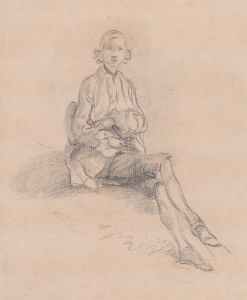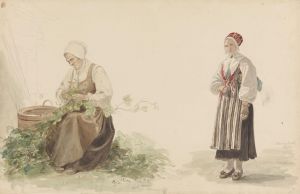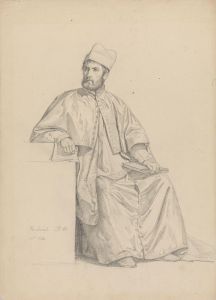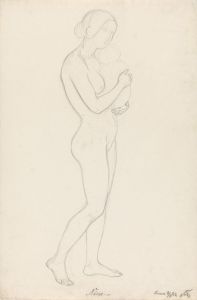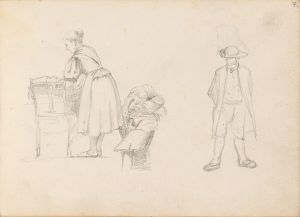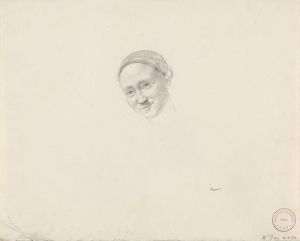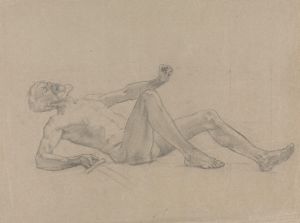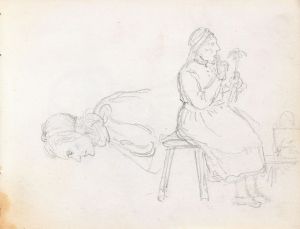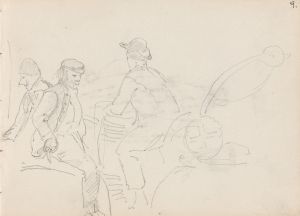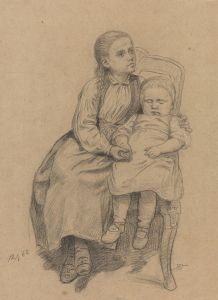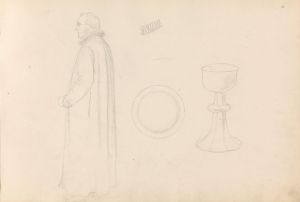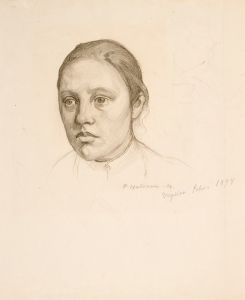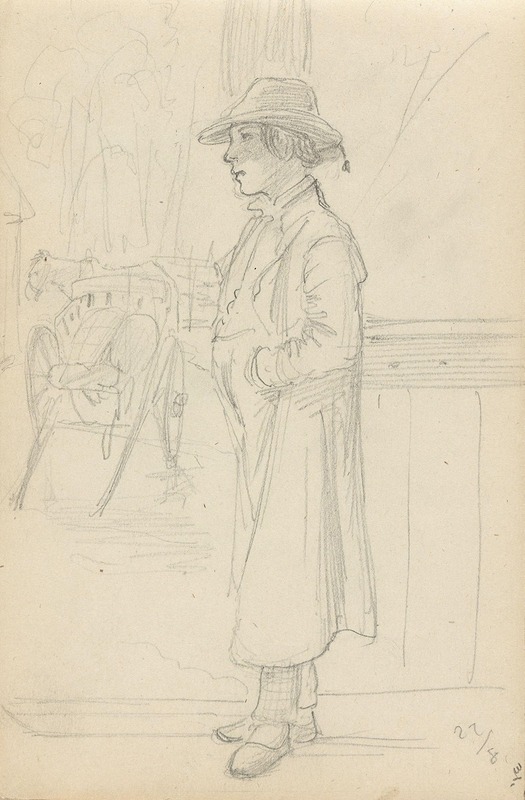
Ung mann
A hand-painted replica of Adolph Tidemand’s masterpiece Ung mann, meticulously crafted by professional artists to capture the true essence of the original. Each piece is created with museum-quality canvas and rare mineral pigments, carefully painted by experienced artists with delicate brushstrokes and rich, layered colors to perfectly recreate the texture of the original artwork. Unlike machine-printed reproductions, this hand-painted version brings the painting to life, infused with the artist’s emotions and skill in every stroke. Whether for personal collection or home decoration, it instantly elevates the artistic atmosphere of any space.
Adolph Tidemand was a prominent Norwegian painter in the 19th century, known for his detailed and realistic depictions of Norwegian folk life and culture. One of his lesser-known works is "Ung mann," which translates to "Young Man" in English. While there is limited specific information available about this particular painting, Tidemand's broader body of work and his artistic style can provide context for understanding this piece.
Adolph Tidemand was born on August 14, 1814, in Mandal, Norway. He studied art in Copenhagen and later in Düsseldorf, Germany, which was a significant center for art and culture at the time. Tidemand became associated with the Düsseldorf School of painting, which emphasized detailed realism and often focused on historical and genre scenes. His works frequently depicted Norwegian rural life, capturing the customs, costumes, and traditions of the Norwegian people during the 19th century.
Tidemand's paintings are characterized by their attention to detail and the ability to convey the essence of Norwegian culture and identity. He often collaborated with Hans Gude, another prominent Norwegian painter, on several works that combined landscape and figure painting. Their most famous collaboration is "Bridal Procession on the Hardangerfjord," which beautifully illustrates a traditional Norwegian wedding procession set against a stunning fjord landscape.
While specific details about "Ung mann" are scarce, it is likely that the painting reflects Tidemand's interest in portraying everyday life and the people of Norway. His works often feature individuals in traditional Norwegian attire, engaged in various activities that highlight their cultural heritage. Tidemand's ability to capture the nuances of expression and the subtleties of human interaction is evident in many of his portraits and genre scenes.
Tidemand's contribution to Norwegian art is significant, as he played a crucial role in shaping the national romantic movement in Norway. This movement sought to establish a distinct Norwegian cultural identity through art, literature, and music, often drawing inspiration from the country's history, folklore, and natural landscapes. Tidemand's paintings were instrumental in promoting this cultural renaissance, and his works remain highly regarded in Norway and beyond.
In addition to his artistic achievements, Tidemand was also a respected teacher and mentor to many young artists. His influence extended beyond his own paintings, as he helped to nurture a new generation of Norwegian artists who continued to explore themes of national identity and cultural heritage.
Although "Ung mann" may not be as widely recognized as some of Tidemand's other works, it is likely representative of his broader artistic vision and commitment to depicting the people and traditions of Norway. His legacy as a painter who captured the spirit of Norwegian life and culture continues to be celebrated, and his works are held in high esteem in museums and collections around the world.
In summary, while specific information about "Ung mann" is limited, Adolph Tidemand's overall contribution to Norwegian art and his focus on portraying the country's cultural identity provide valuable context for understanding this painting. His dedication to realism and his ability to convey the richness of Norwegian life make his works enduringly significant in the history of art.






